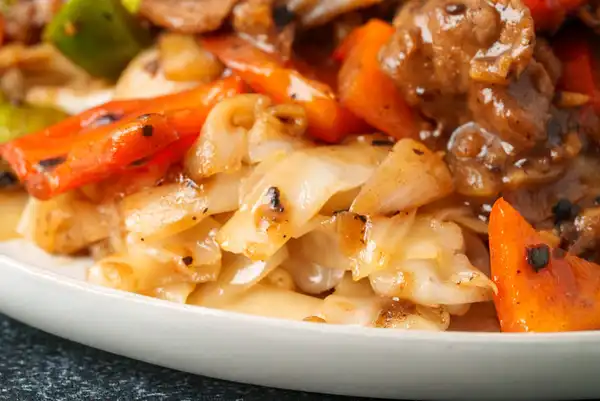A saucy noodle
This is the "wet", sauced up version of the Beef Chow Fun that you may already know. The difference between these two recipes? The other Beef Chow Fun is considered a "dry" rice noodle, where you want to emphasize wok hei, a fleeting toastiness that comes from cooking the beef and the noodles fast and hot, and the satisfying crunch of the vegetables.
This recipe is for a "wet" rice noodle. Its texture is much gentler, with slippery noodles and a savory gravy.
Thank you, Kikkoman!
This recipe is brought to you in part by Kikkoman. My dad has been using Kikkoman flavors throughout his 50-year career as a chef, and it's a privilege to get to partner with them on such an iconic recipe, Beef Chow Fun with Gravy!
- Kikkoman products are a major flavor enhancer and bring out the “umami” taste, and help balance and round out flavors
- Kikkoman® Less Sodium Soy Sauce is perfect for home cooks who are looking to cut down on their sodium levels, without sacrificing flavor
- Kikkoman offers a wide range of Gluten-Free Asian sauces, including Gluten-Free Oyster Sauce and Gluten-Free Hoisin Sauce
- The KikkomanUSA.com Chinese site offers easy Asian recipes that home cooks can enjoy any night of the week
You can learn more about Kikkoman and follow them on social media here:
- Website: https://www.KikkomanUSA.com
- Facebook: https://www.facebook.com/KikkomanChineseUSA (Kikkoman 萬字在美)
- Instagram: https://www.instagram.com/kikkomanusa_chinese/ (Kikkoman 萬字在美)
Check out a quick story summary of our recipe!



